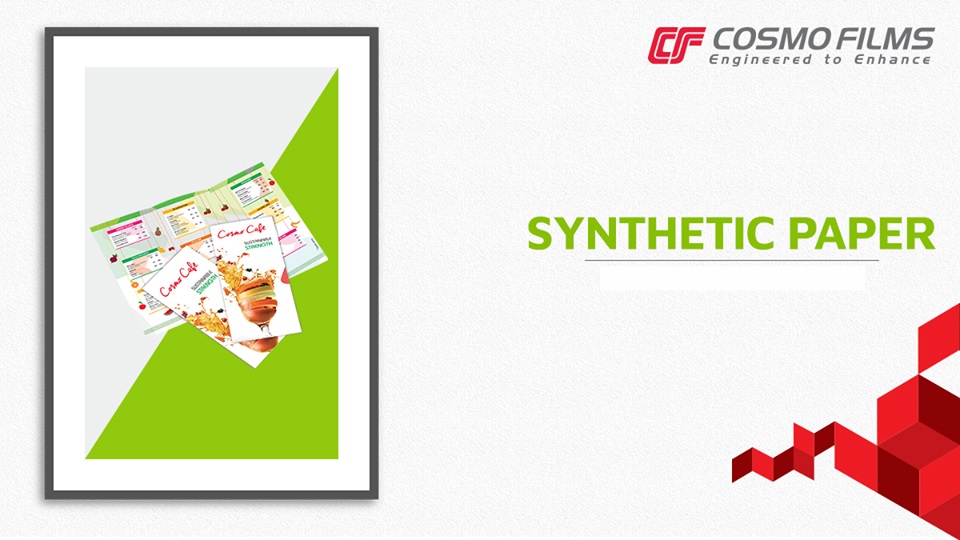COSMO SYNTHETIC PAPER : PRINTING GUIDANCE FOR BEST RESULTS
To create the best replacement for pulp-based paper, Cosmo Films’ experts have come up with Cosmo Synthetic paper. Its exceptional printability, non-tearablility and moisture & chemical resistance make it the foremost business choice today. CSP is best suited for diverse printing technologies such as UV Offset, Thermal Transfer, Screen, Conventional Offset, Water-based Flexo printing, UV Flexo printing, HP Indigo, Letterpress, UV Inkjet & HP Latex printing and selective Laser Print technologies.
Printing Recommendations*
1. Off-set Printing
- Pre-print Stacking - The advisable limit is not more than 3000 sheets. Also, the process demands an adequate conditioning environment before starting printing, especially to ensure smooth movement of sheets. Additionally, the vacuum can cause suction marks and thus needs to be reduced.
- Inks - We advise you to use oil-based offset printing inks (the most suitable one) with CSP. The reason behind it is these inks can undergo evaporative and oxidative polymerization drying mechanisms and dry fast. Whereas conventional inks can be used but take more time to dry.
- Dampening System - Keep the dampening level minimal or else it could cause set off. In the case of multicolor printing, it can lead to improper ink transfer due to excessive water use.
- Dampening Water Criteria - To achieve great results, please follow the instructions below:
➢ pH Level: To avoid ink emulsification, it should be 4.5 to 5.5 (Acidic)
➢ Temperature: 8-10℃ ➢ Alcohol Content: For fast drying or dampening water, it should be 5-10%
- Delivery - It allows up to 3 inches of stacking. And this because it can vary as per sheet size, printing pattern, ink deposition, and amount of powder sprayed.
2. Flexographic Printing
3. Digital Printing
Follow the below precaution for digital printing while using CSP:
➢ Careful media setting selection
➢ Prior material test before use
➢ Sheet adoption in printing environment for 24 hours
➢ Required number of sheet airing to get jam-free feeding
➢ Temperature maintenance between 20- 25℃
➢ Set ideal fusing pressure & temperature as per OEM recommendations
➢ Laminate sheets after printing to extend paper life
4. Thermal Transfer (TTR)
This printing process uses carbon ribbon to move substrate upon heating. The best thing about the process is that it can test energy & speed combinations for printing while performing it for various ribbons. The most compatible ribbons are Armor AXR 7+, Mastercorp TTR Z400, Ricoh B110CR. Wax Resin Ribbons, Armor AXR FH 7+, and Ricoh B110A can also be used for this purpose.
5. Digital Laser Printing (Dry Toner)
This paper printing with dry toner is proven best for some of the CSP variants, including Matte White Both Side Coated. Moreover, liquid toner can not be used for CSP, as it's not good at ink drying through penetration, but surface oxidation.
These are the recommendations you should keep in mind while using this technology:
➢ Proper sheets fanning before loading in the tray
➢ Involve the service engineer for better media setting
➢ Adjust image transfer to get good quality print results (if required)
➢ Ensure proper machine earthing
➢ Use external static eliminator device for higher productivity
➢ Keep room temperature and relative humidity between 20-25℃ & 55% +-10% respectively
*Over and above, CSP has been tried and tested for Letterpress and Screen Printing technologies as well. If you're looking for Packaging Films with the mentioned quality & features, contact us at emktng@cosmofilms.com



Comments
Post a Comment